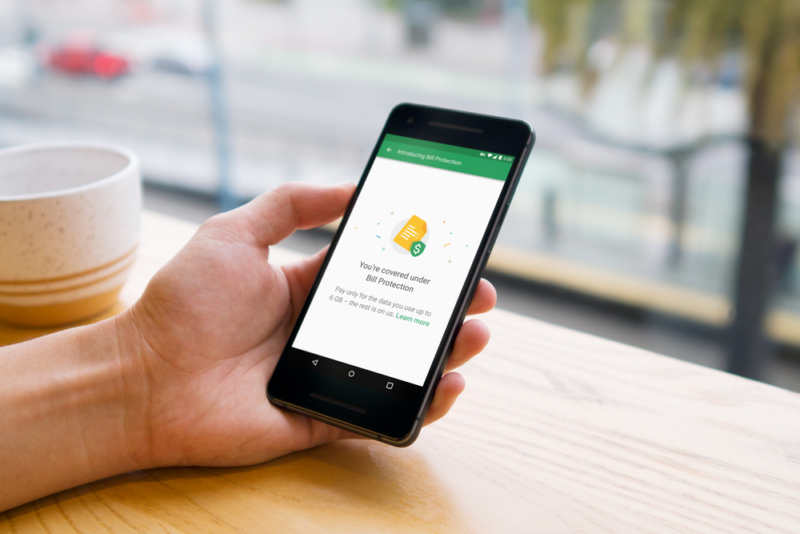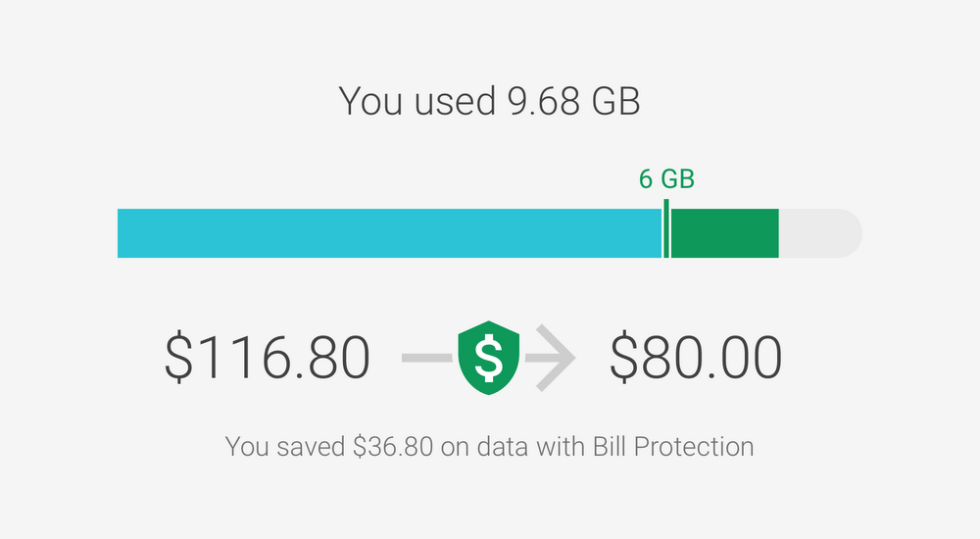
When we looked at Google’s Project Fi cellular service at launch, we worked out that the pay-per-MB service was great for people who use a small amount of data or those who need a flexible amount of data from month to month. It didn’t make sense for people who consistently use a ton of data, though, as you could essentially rack up an unlimited bill.
Now Project Fi is throwing a bone to big data users with “bill protection,” a cap on the amount Project Fi will charge. Project Fi bills will now cap out at $80, no matter how much data you use. This basically works out to a Project Fi unlimited plan. Fi bills start out at $20 for unlimited calls and texts, then “$10 per GB” (though you are billed to the exact megabyte). Before this new plan, an $80 bill would work out to 6GB of data usage, but with bill protection, you can now go up to 15GB of usage with no additional fees. Above 15GB, Project Fi can either work as a not-really-unlimited “unlimited” plan, where your speed is throttled, or you can start paying $10 per GB again to jump back into unthrottled data usage. Google has a calculator for the new plan here.

Google’s MVNO service is turning into a unique and useful cellular carrier. In addition to the flexible month-to-month billing, Fi combines the networks from Sprint, T-Mobile, and US Cellular. You can get multiple data-only SIM cards for free, free hotspot capabilities, and international data in more than 135 countries—all data usage counts toward your $10-per-GB bill. Sometimes you don’t need a SIM card at all—on the Google Pixel 2, you can provision your phone for Project Fi service using the built-in eSIM chip. Fi has also absorbed all the functionality of Google Voice—you can forward your number to any other device, there’s online or app-based voicemail with transcriptions, and you can get text messages on any device through the Google Hangouts app or website.
The main downside of Project Fi is that the three-carrier setup requires a compatible phone that can switch between carriers. The only currently available phones compatible with Fi’s triple-carrier setup are the Pixel 1 and 2 and the Moto X4. Older Nexus devices like the 6P, 5X, and Nexus 6 are compatible as well. You can slap a Fi SIM card in just about any GSM device and get plain old T-Mobile service.







